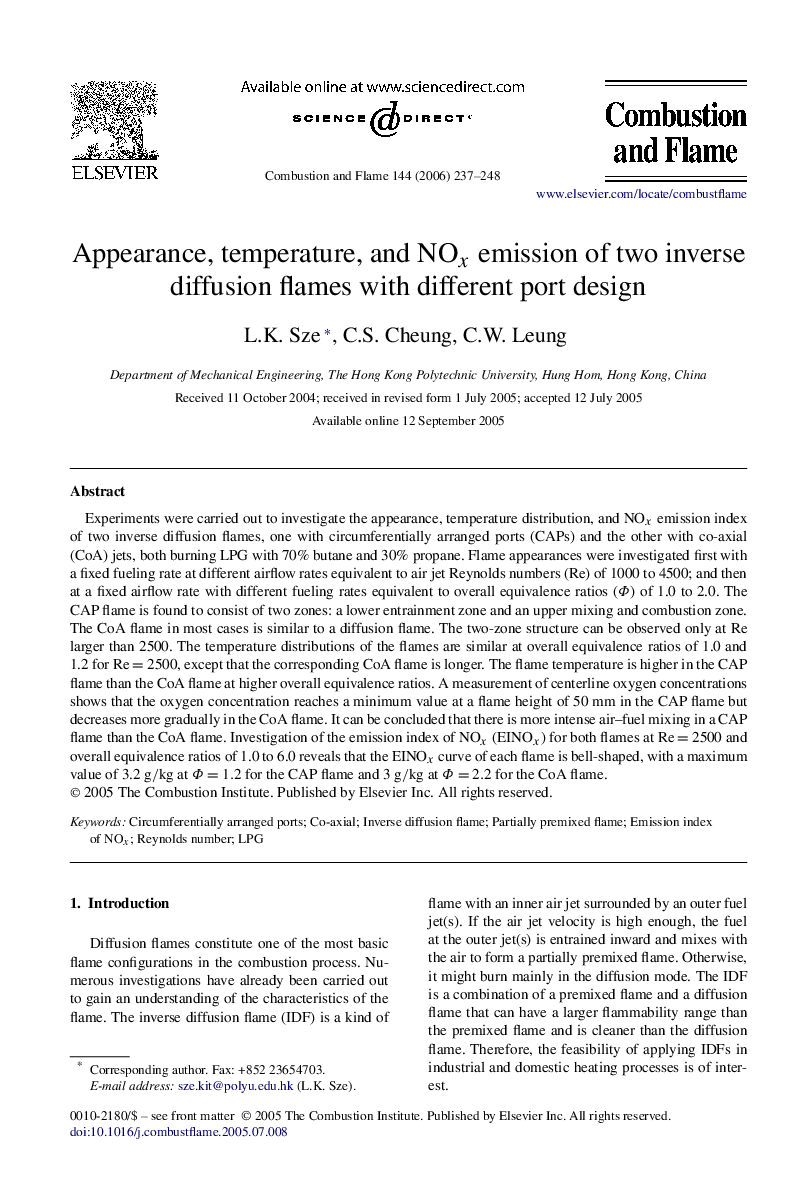| Article ID | Journal | Published Year | Pages | File Type |
|---|---|---|---|---|
| 168323 | Combustion and Flame | 2006 | 12 Pages |
Experiments were carried out to investigate the appearance, temperature distribution, and NOx emission index of two inverse diffusion flames, one with circumferentially arranged ports (CAPs) and the other with co-axial (CoA) jets, both burning LPG with 70% butane and 30% propane. Flame appearances were investigated first with a fixed fueling rate at different airflow rates equivalent to air jet Reynolds numbers (Re) of 1000 to 4500; and then at a fixed airflow rate with different fueling rates equivalent to overall equivalence ratios (Φ ) of 1.0 to 2.0. The CAP flame is found to consist of two zones: a lower entrainment zone and an upper mixing and combustion zone. The CoA flame in most cases is similar to a diffusion flame. The two-zone structure can be observed only at Re larger than 2500. The temperature distributions of the flames are similar at overall equivalence ratios of 1.0 and 1.2 for Re=2500Re=2500, except that the corresponding CoA flame is longer. The flame temperature is higher in the CAP flame than the CoA flame at higher overall equivalence ratios. A measurement of centerline oxygen concentrations shows that the oxygen concentration reaches a minimum value at a flame height of 50 mm in the CAP flame but decreases more gradually in the CoA flame. It can be concluded that there is more intense air–fuel mixing in a CAP flame than the CoA flame. Investigation of the emission index of NOx (EINOx) for both flames at Re=2500Re=2500 and overall equivalence ratios of 1.0 to 6.0 reveals that the EINOx curve of each flame is bell-shaped, with a maximum value of 3.2 g/kg at Φ=1.2Φ=1.2 for the CAP flame and 3 g/kg at Φ=2.2Φ=2.2 for the CoA flame.
